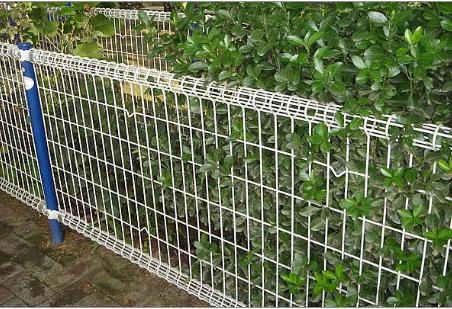 TEL:
+86-13102802206
TEL:
+86-13102802206
 Email:
fencenetting@china.com
Email:
fencenetting@china.com
 Language
Language
 TEL:
+86-13102802206
TEL:
+86-13102802206
 Email:
fencenetting@china.com
Email:
fencenetting@china.com
 Language
Language


The Cost of a Barbed Wire Fence What You Need to Know
When considering options for fencing, barbed wire is a popular choice for many property owners, especially in rural areas. Its durability, effectiveness in keeping livestock in place, and affordability make it an attractive option. However, understanding the total cost of installing a barbed wire fence is essential for budgeting and planning purposes. This article will break down the various factors that contribute to the overall cost of a barbed wire fence.
Material Costs
The most significant portion of the cost of a barbed wire fence comes from the materials. Barbed wire itself is relatively inexpensive and typically sold in rolls. Prices can vary depending on the gauge of the wire and the number of barbs per foot. On average, you can expect to pay between $0.10 and $0.50 per linear foot for barbed wire, with higher-quality options costing more.
In addition to the barbed wire, you will need to consider the costs of fence posts, which can be made from wood, metal, or concrete. Wooden posts are generally the most affordable, averaging about $2 to $5 each, while metal posts can range from $6 to $15. On average, you will need one post every 8 to 12 feet, depending on the type of terrain and the stiffness of the wire.
Labor Costs
Labor costs can vary significantly based on location, the experience of the contractors, and the complexity of the installation. If you choose to install the fence yourself, you can save on labor costs, but you will need to invest time and effort. Hiring professional contractors can range from $1 to $3 per linear foot for installation. It’s essential to get multiple quotes to ensure you’re getting a fair rate.

Additional Considerations
Before starting your fencing project, it's crucial to consider additional costs associated with the installation. For instance, if your site requires land clearing or grading before installation, this can add to the overall project cost. Similarly, if there are existing fences or obstacles that impede the installation, you may incur additional expenses.
Permits can also be a factor. Some municipalities require permits for fencing, which could involve fees that vary depending on local legislation. It’s wise to check with your local government to understand the regulations in your area.
Maintenance Costs
After installation, maintenance is another aspect that can affect the total cost of a barbed wire fence over time. Barbed wire fences need periodic inspections and upkeep to ensure they remain secure and effective. This includes checking for loose wires, rust, or broken posts. The frequency and extent of maintenance will influence future costs, but barbed wire is generally low-maintenance compared to other fence types.
Conclusion
The cost of a barbed wire fence is influenced by various factors, including material costs, labor, installation complexities, and ongoing maintenance. While the upfront costs can be relatively low, it’s crucial to factor in all associated expenses to get a true picture of your investment. Whether you’re fencing in livestock, marking property boundaries, or enhancing security, understanding the costs involved will help you make informed decisions for your fencing needs. Always consider seeking professional advice or quotes to ensure you get the best value for your project.